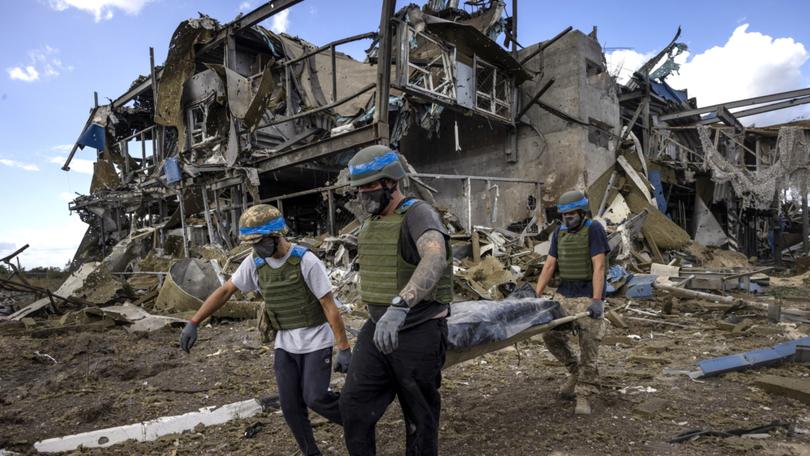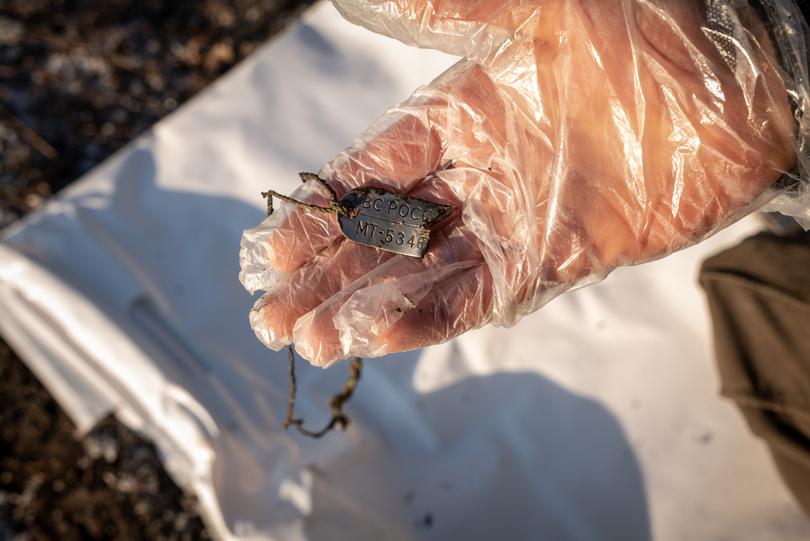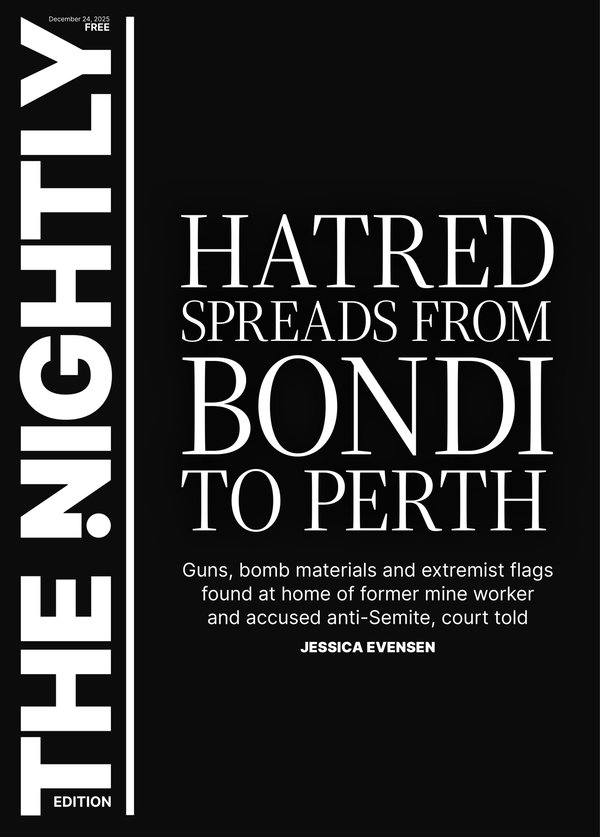THE NEW YORK TIMES: Russia has suffered colossal losses in Ukraine. Is its army depleted?

BERLIN — Russia’s military made its largest territorial gains in more than two years in October, as it pressed farther into Ukraine’s eastern Donbas region — but at a heavy cost.
British and Ukrainian military officials, as well as BBC researchers, claim that Russia suffered its highest rate of dead and injured soldiers during that month. The arrival of thousands of North Korean troops in Russia is also raising questions about whether the Kremlin has enough soldiers to make up for its losses.
What do we really know about Russia’s casualties and its ability to replace them?
Sign up to The Nightly's newsletters.
Get the first look at the digital newspaper, curated daily stories and breaking headlines delivered to your inbox.
By continuing you agree to our Terms and Privacy Policy.The losses that matter
It is difficult to obtain concrete information about Russian casualties, which comprise deaths and injuries. Moscow has an incentive to minimize its losses and rarely discloses any information; Ukraine and its allies have an incentive to overstate them.
Even if they are accurate, the Western casualty estimates usually lump together deaths with all injuries. Military experts say that category is too broad to fully explain the state of the war. Lightly wounded soldiers can quickly recover, for example.
What determines a military’s true ability to fight are its irreplaceable, irrecoverable or permanent losses — soldiers who are dead or so seriously injured that they will never see battle again.
Russia and Ukraine treat such statistics as state secrets.
Ukraine guards its casualty figures especially closely, restricting journalists’ ability to report on the topic, withholding information from allies and halting the publication of demographic data.
Some independent Russian journalists and researchers have found innovative ways to count Russia’s dead and wounded, digging up information from diverse sources like obituaries, cemeteries, disability payments and notary databases.
Their calculations begin to show a more accurate toll of the war, shedding light on Russia’s ability to continue the fight. They also suggest that Russia has lost more soldiers in this war than any industrialized nation has in a conflict since World War II.

Counting obituaries and burials
Journalists from the independent Russian news outlet Mediazona and the BBC Russian Service have been counting Russian soldiers who have died in Ukraine since the early months of the invasion. Their methods are based on collecting and cross-checking public information such as obituaries and cemetery burials.
This work has produced the most comprehensive database of confirmed Russian combat deaths: 78,000 soldiers by November, not including the Ukrainian separatists and foreigners fighting for Russia. (A similar, but less transparent, account of Ukraine’s losses found 65,000 dead soldiers by mid-November.)
Mediazona’s tally is incomplete: Some soldiers leave no trace when they die. The journalists estimate that they have recorded about half of all Russian military deaths.
Counting inheritances
Another independent Russian news outlet, Meduza, collaborated with Mediazona and the BBC for a statistical analysis of war casualties.
Their main tool is Russia’s public notary database, which contains all inheritance cases opened by the relatives of killed soldiers. To collect the data, Meduza and Mediazona journalists must outsmart government programmers who try to block them from locating and downloading inheritance entries.
Once the data is collected, the journalists use statistical tools developed during the pandemic to calculate how many military-age Russian men became subjects of inheritance proceedings since the invasion. This analysis of excess mortality led the journalists to estimate Russia’s total military deaths at nearly 150,000 by the end of October.
Counting the wounded
After estimating the number of dead Russian soldiers, journalists from the BBC, Mediazona and Meduza collaborated on the next task: quantifying Russia’s severe battlefield injuries.
They consulted military experts, analyzed leaked personnel lists and looked at statistics on veterans’ compensation payments. They concluded that for every dead Russian soldier, about two more were seriously injured.
That ratio is a rough approximation, they cautioned. It will fluctuate throughout the same war, as weapons, medical equipment, weather and tactics change.
Adding up the estimated number of dead and the seriously injured, Meduza estimated that Russia’s military had suffered a total of 405,000 irreplaceable losses by late October. Using a similar method, Olga Ivshina of the BBC estimated 484,000 irreplaceable Russian losses in the same period.

Assessing military intelligence
The military intelligence agencies of Ukraine and many NATO nations produce their own estimates of Russian casualties. They all claim that Russia has lost 600,000 to 700,000 in dead and wounded soldiers as of October.
These agencies do not disclose their methods. The numbers they make public usually represent the top range of their internal estimates and include light injuries, according to officials and military analysts familiar with the calculations.
The Pentagon previously said that it had estimated Russian (as well as Ukrainian) losses based on a variety of sources that included satellite imagery, communication intercepts, government statements, social media posts and news articles. U.S. officials note the resulting numbers are “low confidence assessments.”
Military analysts and statisticians said the lack of transparency, and the catchall nature of Western estimates of Russian casualties, made them, at best, an unreliable snapshot of the war.
What it all means
To be sure, losses are just one side of the coin. In a war of attrition as in Ukraine, the supply of new troops is another crucial variable.
In June, Russia’s Defense Ministry counted 33 million men eligible for military service, according to a government database obtained by Meduza. This compares with 6 million potential soldiers who lived in Ukraine before Russia’s invasion in 2022. Just over half of those have since been registered in the country’s military service database.
About 900 men joined the Russian forces every day in the first half of this year, according to an analysis of Russian budget data by Janis Kluge, a Russia expert at the German Institute for International and Security Affairs, a research organization.
They are drawn by ever-rising sign-up bonuses, salaries and compensation payments that will change the financial fortunes of a recruit’s family, regardless of whether he lives or dies. The Kremlin has also looked beyond its borders for new fighters, attracting volunteers from dozens of developing nations and troops from its ally North Korea.
This rate of recruitment has allowed the Russian military not only to replenish losses, but also to create new units. This month, the Pentagon said Kremlin had amassed a combined force of 50,000 Russian and North Korean troops to expel Ukrainian forces from the Kursk region of Russia.
This article originally appeared in The New York Times.
© 2024 The New York Times Company
Originally published on The New York Times
